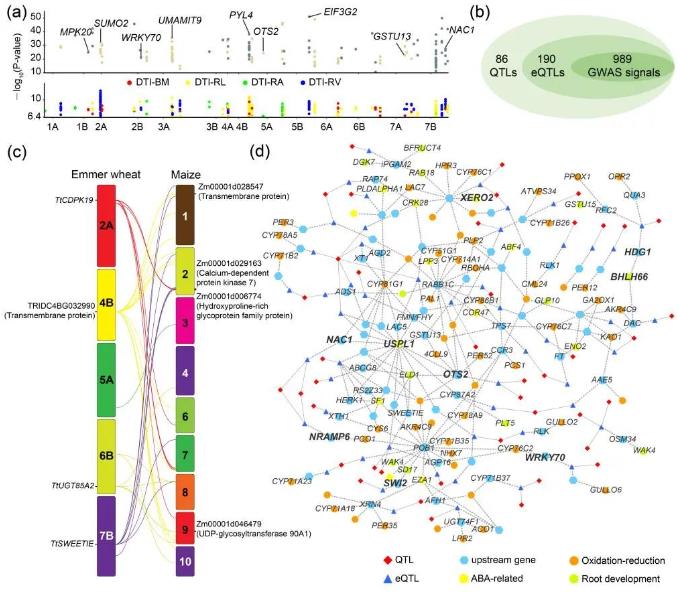Recently, Nie Xiaojun's team and collaborators from the College of Agronomy, Northwest A&F University, China, published a research paper titled "Combined GWAS and eGWAS reveals the genetic basis underlying drought tolerance in emmer wheat (Triticum turgidum L.)" in New Phytologist.
This study used GWAS, eGWAS and co-expression network methods to construct a regulatory network of tetraploid wheat in response to drought stress, and identified drought resistance-related candidate genes and key response modules, providing important information for enriching wheat drought resistance gene resources and genetic basis.
According to statistics, global agricultural losses caused by drought are equivalent to other natural disasters combined. Cultivating and planting drought-resistant crop varieties is an urgent need to improve climate change response capabilities, increase agricultural production water, and ensure food security. Germplasm resources are the carriers of genes and the material basis for genetic improvement. Tetraploid wheat (Triticum turgidum L., 2n = 4x = 28, AABB) is the donor of the A and B chromosome sets of common hexaploid wheat. As the direct ancestral species of wheat, tetraploid wheat has the characteristics of large grains, strong stress tolerance, and rich genetic variation. It has always been an important germplasm and gene bank for wheat genetic improvement. Therefore, it is of great significance to excavate excellent drought-resistant germplasm of tetraploid wheat and identify and utilize its drought-resistant genes to overcome the homogenization of drought-resistant genes in common wheat and broaden the genetic basis of wheat drought resistance. It also plays an important role in promoting the creation and breeding of new drought-resistant wheat germplasm.

This study selected 107 widely representative tetraploid wheats from around the world as materials. Based on the simulated drought method, the drought resistance in the seedling stage was systematically identified and evaluated, and the gene expression profile of the root system under control and drought stress was analyzed using RNA-seq technology. Population transcriptome analysis found that 9301 genes were differentially expressed in the population. Furthermore, based on the comprehensive genome variation information obtained by population resequencing analysis, GWAS and eGWAS analyzes were conducted using tetraploid wheat drought resistance and gene expression as phenotypes. A total of 86 drought resistance-related QTL and 190 eQTL sites were identified. Combining QTL, eQTL and co-expression network, a genetic network was constructed that was significantly enriched in ABA signaling pathway genes, ROS homeostasis maintenance genes and root development genes, including 174 upstream layer genes, 2432 downstream layer genes, and 11 intermediate hub genes. Through gene network reconstruction and mutant verification experiments, it was proven that the network hub node gene TtOTS1 is a key candidate gene that negatively regulates drought resistance in tetraploid wheat. In short, this study used population genome and population transcriptome analysis systems to identify and mine tetraploid wheat drought resistance-related genes and their regulatory sites, providing important genetic resources and source support for the genetic improvement of drought resistance in tetraploid wheat and common wheat.
Reference:
Yang, G., et al. Combined GWAS and eGWAS reveals the genetic basis underlying drought tolerance in emmer wheat (Triticum turgidum L.). New Phytol. 2024 Feb 15.